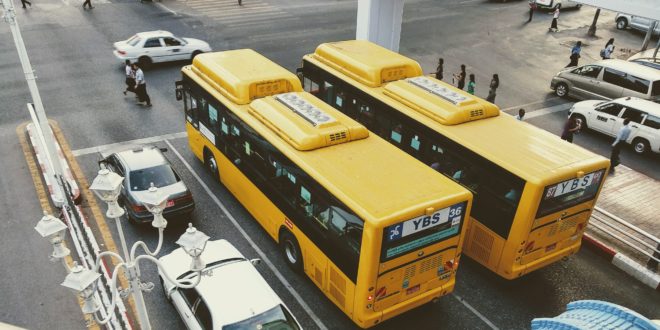 The meltdown of the new Wellington bus service has been well publicised. It seems that everything that could have gone wrong has gone wrong. There have been meetings with angry residents, letters to the paper, opinion articles in the papers and so on. The response of the Wellington Regional Council (WRC) has been low key if not downright arrogant – their view seems to be that teething problems were inevitable and it will all come right over the next 8 weeks or so. Just be patient!
The meltdown of the new Wellington bus service has been well publicised. It seems that everything that could have gone wrong has gone wrong. There have been meetings with angry residents, letters to the paper, opinion articles in the papers and so on. The response of the Wellington Regional Council (WRC) has been low key if not downright arrogant – their view seems to be that teething problems were inevitable and it will all come right over the next 8 weeks or so. Just be patient!
Things may well come right over 8 weeks or so but this still leaves the Regional Council with a botched job which has angered and inconvenienced countless Wellingtonians. My own view is that the problems encountered were not unexpected given the approach adopted, and a more measured approach would have got better results in a shorter time with less inconvenience – and lower blood pressures all around. So, what could have been done differently?
I should first say that the Council will I am sure have developed a master plan of their proposed network which would have been the basis for implementation. However, an important question is how far this provided for the network to be integrated and inter-connected. In developing plans there is a natural tendency to integrate and interconnect as far as possible. In theory, this gives the most efficient and lowest cost solution, and it is hard for Councils to resist that. In practice highly, integrated networks are extremely risky because problems at one point can progress and magnify over all of the rest of the network. In practice reliability and robustness are just as important as initial cost and networks should have deliberate cut off points (so that problems cannot propagate through the network) and a degree of deliberate redundancy, ie there should be more than one way of getting to any desired end point. While this might mean more up-front capital cost, this is likely to be more than compensated for by a comparatively smooth implementation with lower implementation costs.
A primary question for the Council is that of how far they planned for the reduction of this integration/interconnection risk. In essence, it is a question of (apparent) cost v robustness. I say apparent because lack of robustness can lead to spiralling costs in getting a “fix”. The fact that the new network requires several new transport hubs and that many trips that were previously carried out on a single bus now require transfers between buses and routes is not an encouraging sign.
Planning aside. there are basically two approaches that can be taken to tasks like the implementation of a brand-new network – what might be called the “big bang” approach and the “incremental approach” – and there are variations of both which are too many to recount.
The “big bang” approach was that clearly adopted by the WRC and consisted of changing everything at once so that (purportedly) important connections could be implemented immediately and benefits provided for users. And sometimes this is the best approach to adopt – particularly if network connections are too intense for individual elements to be practicably separated out, or if the network design is too complex for implementation interactions to be reasonably predicted. But the planning has to be very intensive and must be accompanied by a comprehensive risk analysis so that risk areas are identified beforehand and corrective actions can then be quickly identified and applied if needed. Conversely “big bang” can be readily applied if the network is very simple and there are a limited number of interconnection issues to consider.
I don’t think that any of these conditions applied to the Wellington bus service. On a world scale, Wellington is not much more than a large village. However, it has constrained geography which introduces extra complexity which means the “big bang” does carry risks.
The “incremental approach” in contrast is as simple as it sounds. It involves implementing the new network in increments or chunks which can be got right in isolation and without too much work. To use a common expression, it is a case of “picking off the low hanging fruit first.” The most complex parts of the network should be left until last. Doing this is not only sensible but keeps the bus users “on side”, because of the lack of problems and the ability to see and report positive progress. When the final and most complex parts of the network are implemented, bus users can be warned and are thus more likely to accept some temporary inconvenience, and there is the advantage to the implementers in having benefited from the learning associating with implementing the early straightforward stages.
All of this is surely common sense??
By Bas Walker
This is another of Bas Walker’s posts on GrownUps. Please look out for his articles, containing his Beachside Ponderings.









Join the Discussion
Type out your comment here:
You must be logged in to post a comment.